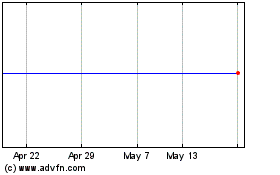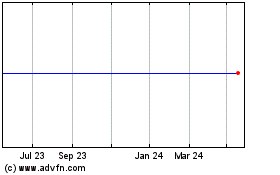The adoption of the standards or interpretations is described
below:
IAS 12 Income Taxes (Amendment) - Deferred Taxes: Recovery of
Underlying Assets
The amendment clarified the determination of deferred tax on
investment property measured at fair value and introduces a
rebuttable presumption that deferred tax on investment property
measured using the fair value model in IAS 40 should be determined
on the basis that its carrying amount will be recovered through
sale. The amendment is effective for annual periods beginning on or
after 1 January 2012. The amendment had no effect on the Group's
financial position, performance or its disclosures.
IFRS 1 First-Time Adoption of International Financial Reporting
Standards (Amendment) - Severe Hyperinflation and Removal of Fixed
Dates for First-Time Adopters
The amendment had no effect on the Group's financial position,
performance or its disclosures.
IFRS 7 Financial Instruments: Disclosures - Enhanced
Derecognition Disclosure Requirements
The amendment requires additional disclosure about financial
assets that have been transferred but not
derecognised to enable the user of the Group's financial
statements to understand the relationship with those assets that
have not been derecognised and their associated liabilities. In
addition, the amendment requires disclosures about the entity's
continuing involvement in derecognised assets to enable the users
to evaluate the nature of, and risks associated with, such
involvement. The amendment is effective for annual periods
beginning on or after 1 July 2011. The Group does not have any
assets with these characteristics so there had been no effect on
the presentation of its financial statements.
4. SIGNIFICANT ACCOUNTING POLICIES
Basis of consolidation - The Group's consolidated financial
statements incorporate the financial statements of the Company and
its subsidiaries. Control comprises the power to govern the
financial and operating policies of the investee so as to obtain
benefit from its activities and is achieved through direct and
indirect ownership of voting rights; currently exercisable or
convertible potential voting rights; or by way of contractual
agreement. Subsidiaries are consolidated from the date on which
control is transferred to the Group and are de-consolidated from
the date that control ceases.
Inter-company transactions, balances and unrealised gains and
losses on transactions between group companies are eliminated.
Accounting policies of subsidiaries have been changed where
necessary to ensure consistency with the policies adopted by the
Group.
Segmental reporting - Operating segments are reported in a
manner consistent with the internal reporting provided to the
directors of the Company. The chief operating decision-maker, who
is responsible for making strategic decisions, allocating resources
and assessing performance of the operating segments, has been
identified as the Board.
Functional and presentation currencies - The items included in
these consolidated financial statements relating to the Group
companies are measured using their functional currency that is the
currency in the main environment in which they operate. These
consolidated financial statements are presented in US dollars or $,
which is the Exillon Energy plc functional and presentation
currency. The functional currency of the Group's trading and oil
extracting subsidiaries is the Russian Rouble and for the other
companies it is the US dollar.
Foreign currency translation - Transactions in foreign
currencies are initially recorded in the functional currency at the
rate ruling at the date of the transaction. Monetary assets and
liabilities denominated in foreign currencies are retranslated to
the functional currency at the rate of exchange ruling at the
reporting date. All differences are taken to the statement of
comprehensive income.
Loans issued to the foreign subsidiaries, the settlement of
which is neither planned nor likely to occur in the foreseeable
future, form part of the Company's net investment in those
subsidiaries. They do not include trade receivables or trade
payables. In the consolidated financial statements exchange
differences arising on those loans are recognised initially in
other comprehensive income and reclassified from equity to profit
or loss on disposal of the net investment.
On consolidation, assets and liabilities denominated in foreign
currencies are translated into US dollars at closing rates of
exchange. Results of operations and cash flows of subsidiaries are
translated into US dollars at average rates of exchange. The Group
uses average monthly rates published by Central Bank of the Russian
Federation to translate trading results denominated in Roubles into
US dollars. Differences resulting from the retranslation of the
opening net assets and the results for the year are taken to
reserves.
The Group used the following exchange rates of one Rouble to one
US dollar:
As of or for the year
ended 31 December
2012 2011
Closing rates of exchange 30.3727 32.1961
Effective annual average rates
of exchange 30.7408 29.3865
The exchange rate of UAE Dirham (AED) to US dollar has been held
constant for the last several years at a rate of 3.675 AED for one
US dollar.
Business combinations - The Group uses the acquisition method to
account for business combinations. The consideration transferred
for an acquisition of a subsidiary is the fair values of the assets
transferred, the liabilities incurred and the equity interests
issued by the Group. The consideration transferred includes the
fair value of any asset or liability resulting from a contingent
consideration arrangement. Acquisition-related costs are expensed
as incurred. Identifiable assets acquired and liabilities and
contingent liabilities assumed in a business combination are
measured initially at their fair values at the acquisition
date.
Property, plant and equipment - The Group uses the cost model by
which items of property, plant and equipment are stated at
historical purchase cost less accumulated depreciation and
impairment.
a) Historical cost
Historical cost of property, plant and equipment items includes
their acquisition cost, all the costs directly related to bringing
the assets to the location and condition ready for their intended
use and any costs of dismantling and removing the item or restoring
the site on which it is located.
Staff costs and other operating expenses incurred in the
construction of the asset are also capitalised.
The costs of expansion, modernisation or improvements leading to
increased productivity, capacity or efficiency or to a lengthening
of the useful lives of the assets are capitalised.
Current repair, upkeep and maintenance expenses are recognised
in the consolidated statement of comprehensive income as incurred.
Furthermore, certain of the Group's facilities require periodic
reviews. In this respect, a portion of the items requiring
replacement is recognised specifically and is depreciated over the
period until the next reviewis carried out.
Property, plant and equipment also include investments relating
to oil and gas exploration, development and production
activities.
Exploration and evaluation assets
Exploration and evaluation assets are measured at cost less
provision for impairment, where required.
The Group recognises oil and gas exploration and evaluation
activities using successful efforts accounting, whereby the
accounting treatment of the various costs incurred is as
follows:
(i) The costs incurred in the acquisition of new interests in
areas with proved and unproved reserves including exploration
licence acquisition costs, are capitalised as incurred to the
account "Exploration and Evaluation Assets" of the field
concerned.
(ii) Exploration costs (geological and geophysical expenditures,
expenditures associated with the maintenance of unproved reserves
and other expenditures relating to the exploration activity),
excluding exploratory drilling expenditures, are expensed as
incurred.
(iii) Administrative expenses (office rent, office cars,
administrative personnel, etc.) that are not directly attributable
to the exploration and evaluation activities are expensed as
incurred.
(iv) Exploratory drilling costs are capitalised to the account
"Exploration and Evaluation Assets" of the field concerned, pending
determination of whether potentially economic oil and gas reserves
have been discovered by the drilling effort. If the well does not
demonstrate potential economic oil and gas quantities, the well
costs are expensed as a dry hole and are reported in exploration
expenses. It is not unusual to have exploration wells carried in
the statement of financial position for several years while
additional appraisal drilling and seismic work on the potential oil
and gas field is performed or while the optimum development plans
and timing are established.
(v) The Group classifies exploration and evaluation assets as
tangible assets since its tangible element (underlying reserves) is
significant and exploration and evaluation assets represent an
integral part of the underlying reserves.
(vi) Activities preceding the acquisition of oil and gas properties are defined as
pre-exploration (or pre-licence). All pre-exploration
expenditures are recognised as an expense in the consolidated
statement of comprehensive income when incurred and include project
feasibility studies, surface mapping and appraisal activities, as
well as other overhead costs related to pre-exploration
activities.
Exillon Energy (LSE:EXI)
Historical Stock Chart
From Jul 2024 to Aug 2024

Exillon Energy (LSE:EXI)
Historical Stock Chart
From Aug 2023 to Aug 2024
